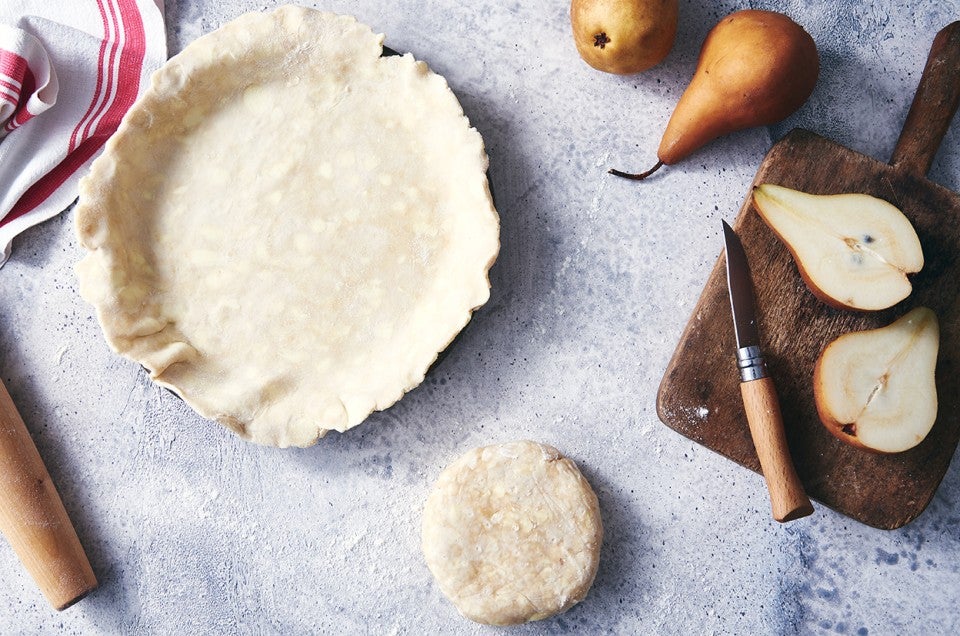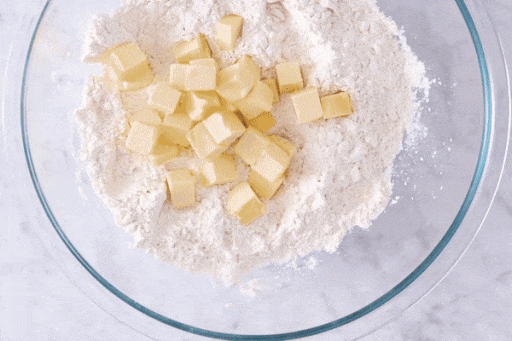Tender Pie Crust
This tender, flaky pie dough can be used for main-course dishes or, by adding the optional sugar, for sweet fillings or even tart shells. Our recipe makes enough for a double-crust 9" pie.

This tender, flaky pie dough can be used for main-course dishes or, by adding the optional sugar, for sweet fillings or even tart shells. Our recipe makes enough for a double-crust 9" pie.


Combine the flour, salt, and sugar in a large bowl.
With a pastry blender, two knives, or your fingertips, cut or rub half of the fat into the flour mixture until it resembles cornmeal.
Take the remainder of the fat and cut or rub it in until the largest pieces are the size of a dime, or flattened peas.

Sprinkle the ice water, one tablespoon at a time, over the flour/fat mixture.
With a fork, toss the mixture that you've just moistened and push it to one side.
Continue until the dough is just moist enough to hold together. Then gather it into a ball (a bit like gently packing a snowball), cut it in half and flatten the halves into two disks.

If you're making a double-crust pie, make the piece for the bottom crust larger, since it has to cover more real estate; the bottom piece should be about twice the size of the top piece.
Wrap the two pieces of dough and put them in the refrigerator to give them a rest for 30 minutes or more before rolling them out. Store unbaked pie dough, well-wrapped, in the refrigerator for 2 days or in the freezer for up to 2 months.
Learn how to make pie crust like a pro with this quick video, Four Tips For Fail-Proof Pie.
Never mind the pastry blender; did you know your stand mixer does a great job with pie crust? See the details in our blog post, How to make pie crust in your stand mixer.

View our privacy policy

